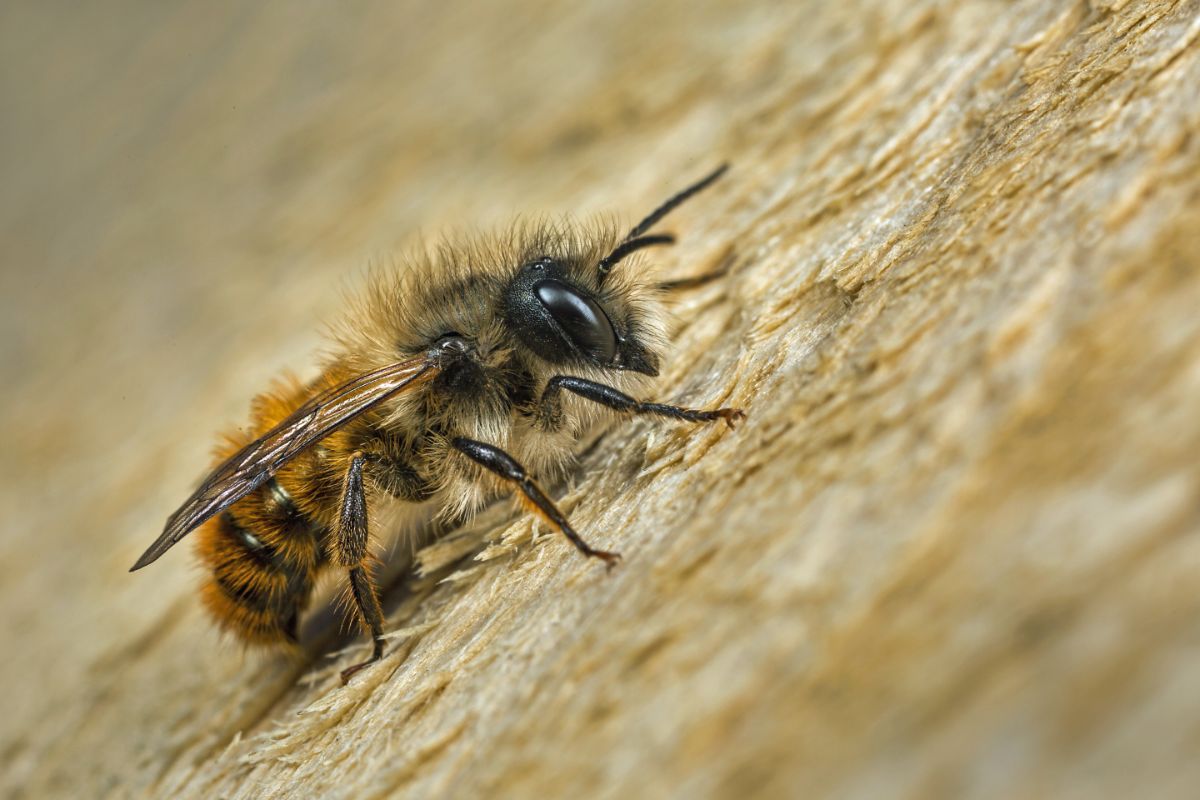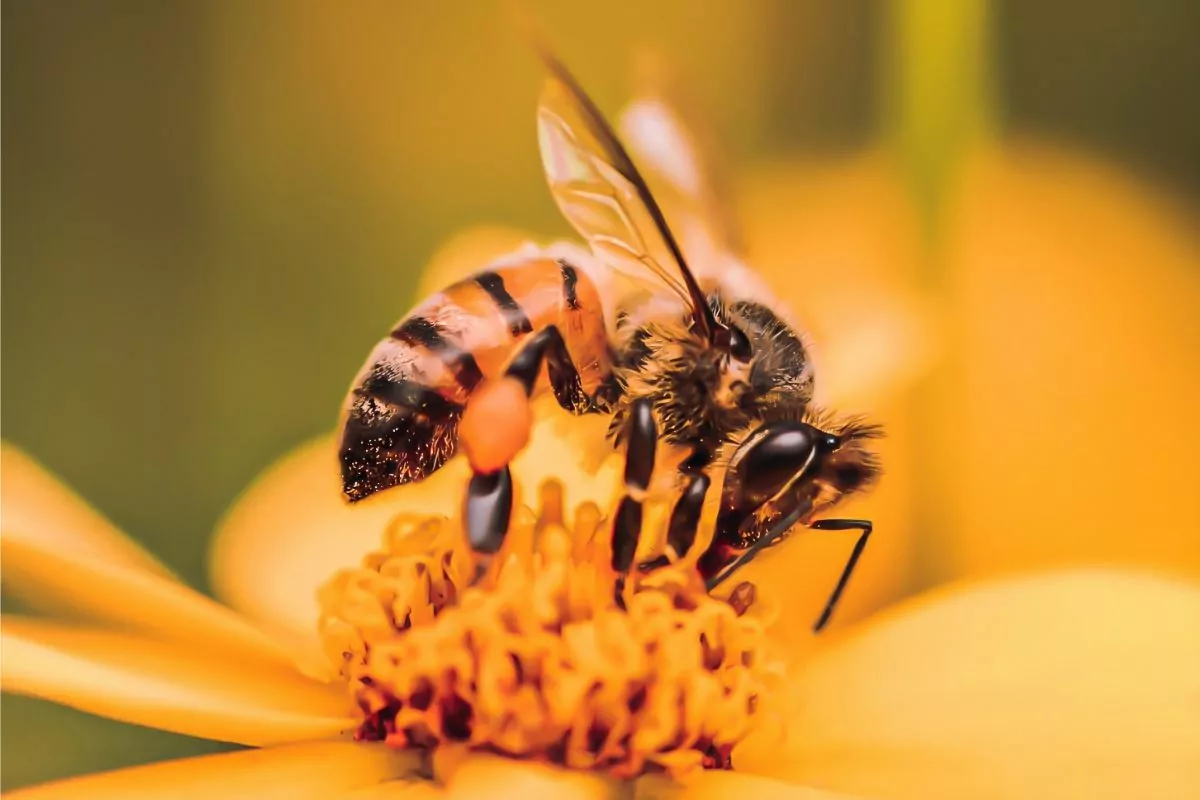Bees take all different shapes and forms, whether it be those smaller bees that nest in hives or those larger bees that tend to stay in tight-knit family units or all by themselves.
![Species Breakdown: Mason Bee [Heriades sp, Neotrypetes]](https://beautifulbees.org/wp-content/uploads/2023/04/Species-Breakdown-Mason-Bee-Heriades-sp-Neotrypetes-1.jpg)
Well, one of the latter bees we’re going to be discussing in this article is the Mason Bee. This kind of bee will often make its home from masonry from fallen buildings.
They also find little hollows in the wall where they nest and lay their eggs. Mason bees have no workers whatsoever, instead, they emerge from their cocoons by themselves.
So, what do Mason Bees look like? How do they behave in the wild? How do they collect pollen and what do they feed on?
What are their natural predators? Well, we’re going to look at the physicality and behavior of the Mason Bee to see what makes them tick.
The Mason Bee Lifecycle
The one defining trait of this bee is the fact that it is completely solitary, it does not have a hive and there is no queen bee or workers.
The females will often burrow their way into narrow gaps, either finding crevices in the wall or boring their way through the wood.
The males will often come out of their cocoons first, with the females following behind. Sometimes the male Mason bee will extract the female.
When the female is making her nest, she might inspect several nests before settling on one.
Once the female has laid her eggs in the narrow chamber, she starts visiting all the flowers in the area to gather pollen provisions for the young in the nest.
Once she feels like her young will have enough provisions to last them through the gestation period, she will then seal off the nest with mud for protection against predators.
Sometimes you will see a whole block of wood with tiny mud smears on them. This will indicate a row of complete Mason bee nests.
The Mason Bee Physicality

This bee has the same anatomy as a lot of different other bees, with a head, a thorax (the middle part of the bee), and an abdomen. This creature has antennae and large black eyes too.
The females possess what is called the scopa, which is located on the abdomen and is used for gathering pollen.
The scopa is missing in the male of the species. They usually have 6 legs and 4 wings that are all attached to the thorax.
Female Mason bees do have stings, however, they are very passive and often will not use them unless they feel trapped or under attack by a predator.
The sting is not described as being that harsh, it will feel more like a mosquito bite than a full bee sting.
How The Mason Bee Pollinates

Most bees tend to pollinate using sacks that can be found on their hind legs, however, this is not the case with the Mason bee.
This type of bee comes with pollen collectors on its bellies. The fur on this part of the body is what will collect the pollen.
How the bee pollinates is that as it transfers from one flower to another, pollen will drop from its belly. They will often come out of their nests during the early spring, which is when the majority of the pollination takes place.
The Mason bee will often not produce honey or beeswax and they are usually immune to a lot of dust mites and other parasites.
Mason Bee Predators
There are plenty of natural predators that the Mason bee faces. Other bees will generally not attack the Mason bee, as they are often solitary.
Honeybees are quite docile, however, the Africanized version of this bee can be very aggressive and will attack any other bee that goes close to their home.
Birds will also prey on the Mason bee, sometimes trying to prize their way into the bee’s nest to get at the eggs or larvae inside.
These birds include robins, crows, starlings and woodpeckers, who often use their long sharp beaks to drill into the wood.
If these birds find a Mason bee nesting box, it will often hang around in an attempt to attack the bees as they emerge from their nest or are out collecting pollen and materials to construct their nest.
If you are trying to cultivate a Mason bee nest and you want to protect them from these birds, then you should try and store the Mason bee house (see also: Best Bee Houses)that you have created in a garden shed.
You can also wrap this house in chicken wire so that the bees will be able to get in but the larger bees will not.
How To Cultivate Mason Bees

There are plenty of materials that you can use for the artificial construction of Mason bee nests. You can use cardboard or wooden tubing that the bees can easily bore through.
You’ll have to make sure that the wood is soft enough, almost like dead tree bark.
You should also make sure that in between seasons you are clearing out your wooden block or replacing it entirely.
This is because these nests are prone to parasites, mold and other forms of rot.
You’ll need to make sure that you provide all the nesting materials for your Mason bee during the early spring seasons.
You’ll need to make sure that these materials are kept out of the way of rain, as they can very easily become susceptible to mold and rot.
Bees will need the temperature of their nest to be around 80 degrees to get their wings warmed up when they are emerging from their nests.
Direct sunlight is very important, so make sure the entrances to their nests are facing the sun.
Conclusion
We hope that our guide to Mason bees has helped you to understand how they behave and given you some tips on how to raise them yourself.
They are quite unlike any other bees and amazing to observe in the wild.
- Do Bug Zappers Kill Bees? Completely Explained - April 9, 2024
- Does Brake Cleaner Kill Bees? Full Explanation - March 20, 2024
- Do Bald-Faced Hornets Kill Honey Bees? & How to Protect Them - March 4, 2024
